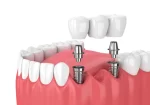Filing for Bankruptcy: A Guide to the Various Options
Are you currently struggling under a mountain of debt and wondering what options are available to you? Often, people consider filing for bankruptcy as the final option for dealing with debt.
That being said, there are various options available for you when filing for bankruptcy, and they can actually be beneficial by wiping the slate clean. This article will go through some options and solutions you may not be aware of.
Chapter 7 Bankruptcy
Chapter 7 bankruptcy is an option for debt management that does not involve settling a repayment plan. That being said, you will have to liquidate your assets in order to settle the debts. Some of your assets may be exempt, such as your house and car.
This is perhaps the most ideal option for individuals who have unsecured debt without collateral.
Chapter 11 Bankruptcy
Filing for Chapter 11 bankruptcy is possible for both individuals and businesses. This type of bankruptcy will involve reorganizing your business. It is most suitable for entities that require more time to go through with their debts.
By restructuring your debts and business structure, you will give yourself more time to start repaying. The trustee will be the one who makes sure your business has enough resources to finance the repayment process. The bankruptcy proceeding, however, can be time-consuming and even take a few years.
If you are looking for a way to make your company become debt free, this may be a suitable choice for you.
Chapter 13 Bankruptcy
Filing for bankruptcy under Chapter 13 will involve settling for a repayment plan that spans between three to five years. The trustee – an independent party – is responsible for setting the rate at which you make regular payments to your creditors. This decision will depend on whether you receive a regular income and how much you receive.
Under this bankruptcy option, the court will compile your debts into one, so you will only have to channel your payments to the trustee. The trustee will then divide the finances to your creditors accordingly.
If you cannot repay all of your debts (which is what happens most of the time), the court will discharge the amount you cannot afford. This debt relief allows you to start over with a clean slate.
Options Available to You When Filing for Bankruptcy
Filing for bankruptcy can be a tough process. It is emotionally taxing but will also be time-consuming and hectic to manage. That being said, know that there are different bankruptcy options to help with your personal insolvency and can help you start over.
The most common types involve Chapter 7, Chapter 11, and Chapter 13 bankruptcy. Which choice you settle on will depend on what you are willing to give up, and what repayment plan works best for you.
More than anything else, know that debt-free living is still possible for you!
Did you find this article helpful? Check out our Finance section.









